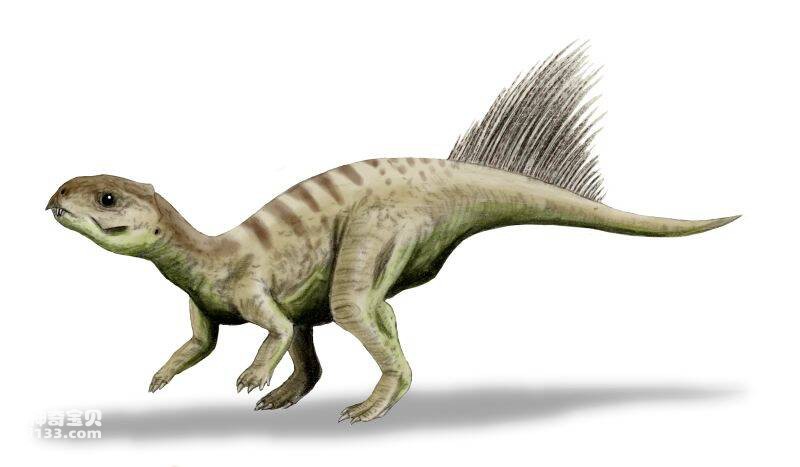Liaoxi Chaoyangosaurus is a small dinosaur discovered in Chaoyang County, Liaoning Province. Based on an incomplete skull with a complete mandible, cervical vertebrae and broken shoulder girdle, Zhao Xijin and others officially named it in 1983. This small dinosaur's premaxillary teeth were triangular in shape and developed with long teeth like canine teeth. The broad palatine process is well developed, and the skull looks very much like Psittacosaurus.
The fossils of Chaoyangosaurus were excavated from the Tuchengzi Formation, which is composed of purple-red and gray sandy shale. It is distributed in the western area of Liaoning Province and belongs to the Late Jurassic strata. The discovery and research of Chaoyangosaurus expanded the historical records of ceratopsians from the Early Cretaceous to the late Jurassic.
In 2004, Youhailu and Peter Dodson of the University of Pennsylvania discovered that Chaoyangosaurus was the most basal neoceratopsian, more derived than Psittacosaurus, and that Leptoceratops was the sister creature of Ceratopsidae. group, rather than Protoceratopsidae.
In clade-based phylogeny, ceratopsians are often defined as: among cephalosaurs, all species that are closely related to Triceratops but farther away from Pachycephalosaurus. Under this definition, the most basic ceratopsian dinosaurs currently known are Hiddenosaurus, which lived with Chaoyangosaurus in the Late Jurassic, and Psittacosaurus, which lived in the Early Cretaceous. These basic ceratopsians are all Lives in northern China and Mongolia. These species already have features such as coracoids and trumpet-shaped cheekbones, indicating that there should be earlier ceratopsian dinosaurs that have not yet been excavated and discovered.
The neoceratopsian clade includes all ceratopsian dinosaurs that are more evolved than the psittacosaurids. Crested ceratopsians now include all ceratopsians that are more descended from Dawnceratops. Crested ceratopsians were the first to develop a head shield, and the first few vertebrae of the neck were anchored to support the growing weight of the head. Among crested ceratopsians, three groups are usually recognized, but the scope of different scientific studies is different, and some dinosaurs are not listed in the three groups. The first group is the Protoceratopsidae, which includes Protoceratops and its close relatives, all found in Asia. The second group is the Lepidoceratopsidae, which includes most species that live in North America and are closely related to Leptoceratops. The third group is the ceratopsian superfamily, which includes Zuniceratops and its close relatives Triceratops. The Triceratops family includes Triceratops and all large North American ceratopsian dinosaurs. This family can be further divided into centrosaurine subfamily and ceratopsian subfamily (also called chasmosaurine subfamily).

Chinese name: Chaoyang Dragon
Latin name: Chaoyangsaurus
Age of survival: Early Cretaceous
Fossil origin: Liaoning, China
Physical characteristics: unknown
Diet: plants
Species: Ceratopsian
Definition: Dinosaur found in Chaoyang area
animal tags: Chaoyangsaurus
We created this article in conjunction with AI technology, then made sure it was fact-checked and edited by a Animals Top editor.